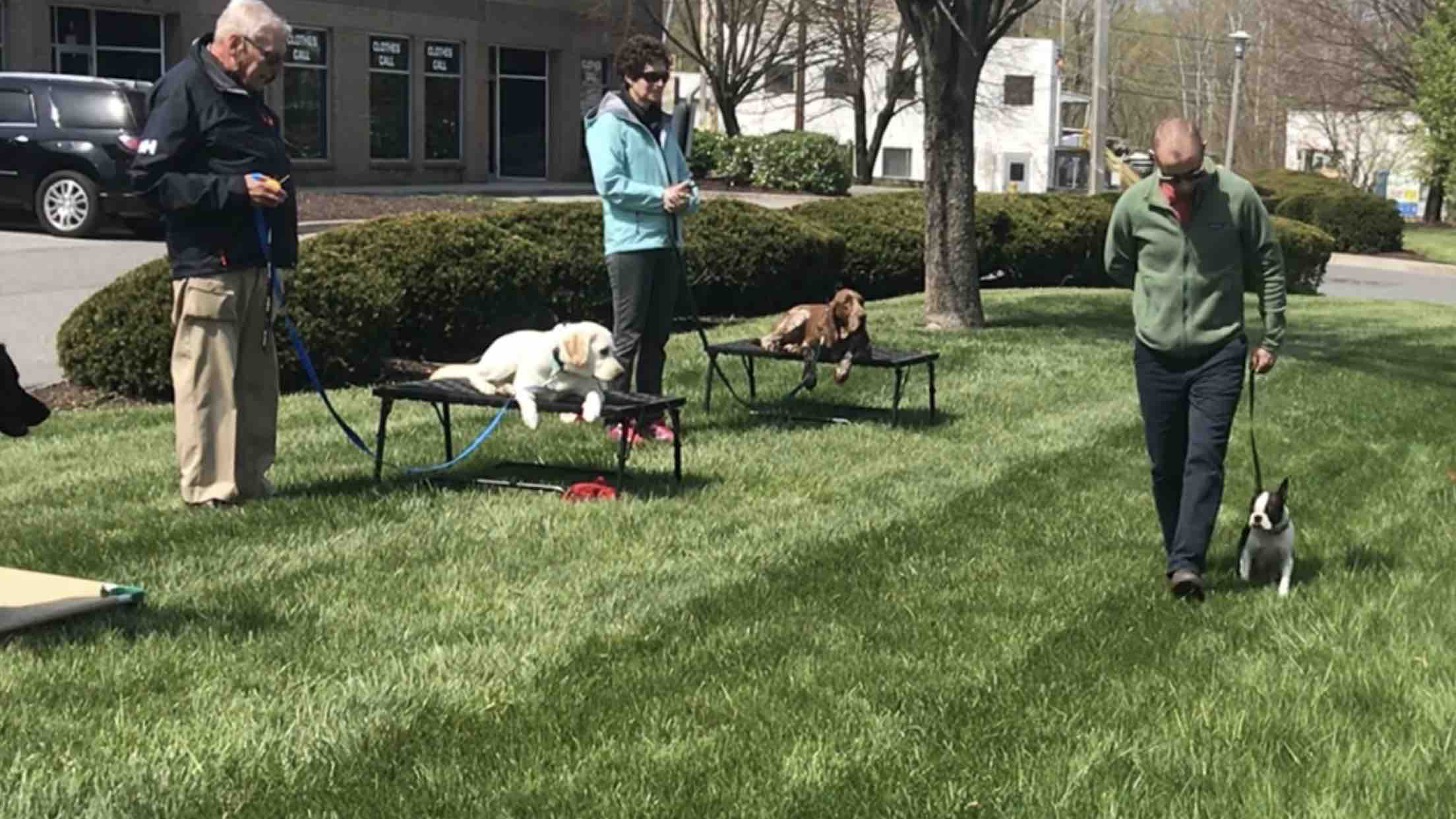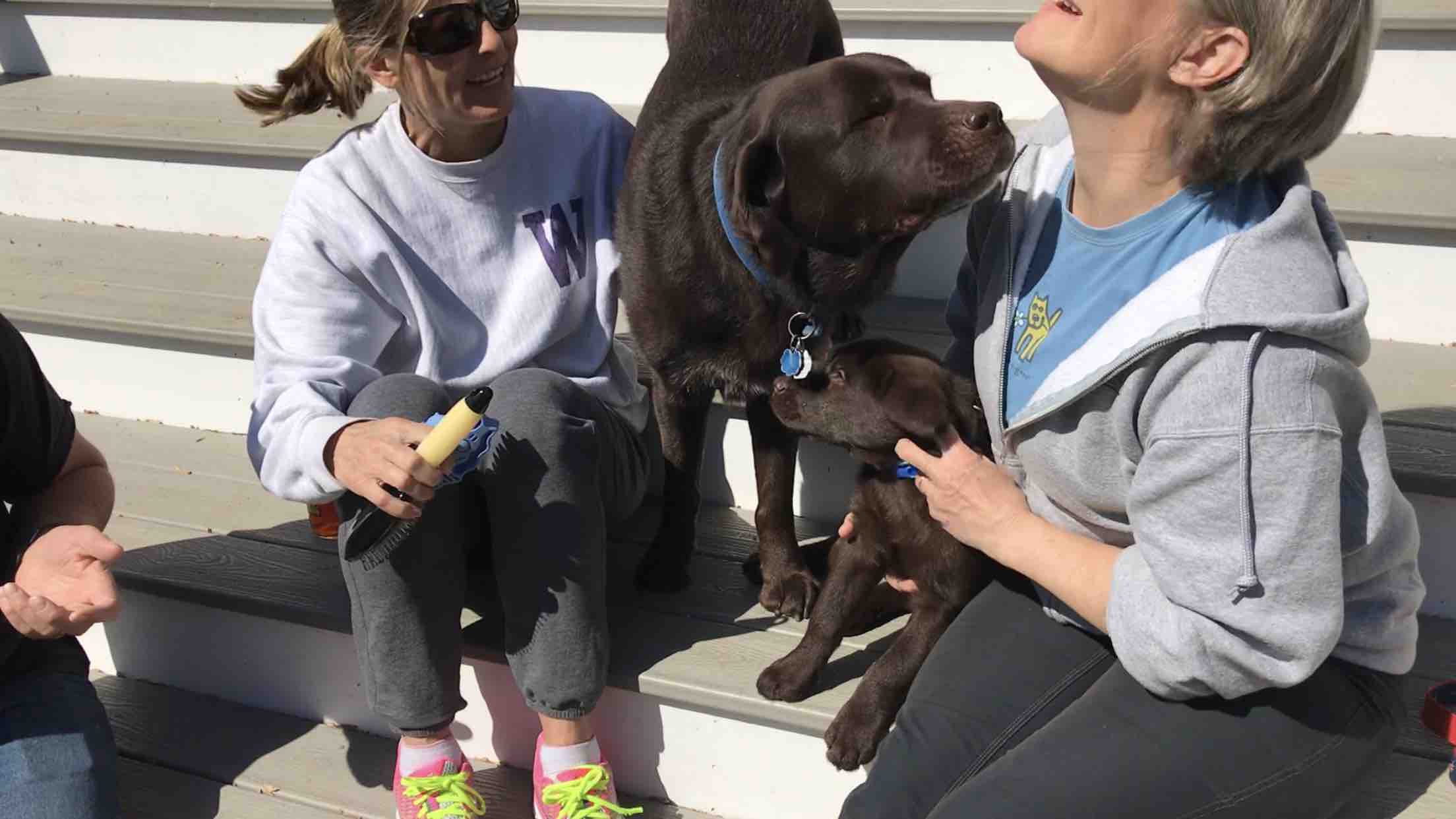How to find the RIGHT dog training for you and your pet

You just want someone to help you train your dog! But there is so much conflicting information out there…how do you choose?
When it comes to dog training, there seem to be as many opinions as there are dog trainers! Force-free, food-free, relationship-based, reward-only, traditional, scientific, blahblahblahblah…it’s all jargon, and most of the time the real meaning of most of those words has become twisted by hype marketing anyway. It can be really, REALLY hard to figure out what might be the best path for you and your dog.
In this post, I’ll lay out the most common options, some pro’s and con’s of each, and (hopefully!) help you to choose a starting point.
Let’s briefly discuss what basic training should be able to help you accomplish.
- A basic obedience program should include reliability under reasonable distractions.
- You should expect to WORK. Daily. Dog training is not a “one and done” thing, and it surely doesn’t happen by osmosis.
- You will need to maintain (and be taught HOW to do that) the training. How polished you want to keep things is up to you 😉
- A basic training program should be more than a collection of “tricks”. Trained behaviors should be real-world relevant, and you should expect instruction on how to incorporate your training into your daily lifestyle.
- Trained outcomes should be held to a measurable, observable standard. If you do your work you should be able to achieve success; make sure that success can be clearly defined!
Before deciding on a training program, you’ll want to consider the following:
What do you and your dog need to learn?
What are your end goals for training?
What are your requirements? Think about your learning style, schedule, skill level, your dog’s needs, the time you have available to train, and your budget.
Here’s an overview of the most commonly available options:
JUST CLICK HERE TO GET IT)
1Group Classes
Working in a group allows you to practice with controlled distractions. Everyone there is on the same page, and the group is being directed. This is something that can be very difficult for people to set up on their own.
While group classes allow for some tweaking for individual students’ or dogs’ needs, there is a set curriculum , and class moves along at a predetermined pace. For some students, that pace is necessary to keep them progressing. For others, it can be tough to keep up.
Group classes don’t usually provide much support or instructor access outside of class, although this will vary from trainer to trainer, so ask!
Group classes are probably the most wallet-friendly option, but there will likely be less flexibility in scheduling, rescheduling, or make-up lessons.
Contrary to popular belief, there ARE group obedience classes out there that will accept dogs with problem behaviors, including aggression, reactivity, and fear, so keep looking! If you happen to be in central Maryland, I offer “all comers” group classes, as do several of my excellent colleagues.

2Private Lessons
Working one-on-one with a trainer allows for more customization of your training plan, so you get exactly what you and your dog need. It allows more severe behavioral problems to be addressed in an individualized way, with all of the instructor’s attention for you and your dog.
Private lessons tend to be more efficient and effective, since the trainer will often get your dog started with a particular skill before handing the leash off to help YOU learn it.
Many private lesson programs will allow for more flexibility in scheduling to meet YOUR scheduling preferences and needs. This is great for people who work long or varying schedules, who travel frequently, or who just can’t make that Wednesday afternoon at 2 p.m. group class.
Many private lesson programs will meet in your own home and neighborhood, so the training is immediately relevant.
Most private lessons come with great support, both between and after your lessons.
Private lessons are more expensive, but generally more efficient in getting the job done.

3Board and Train (immersion) Training
In this type of training, your dog stays in a facility or in a trainer’s home during the training process, and a professional will teach your dog and then teach you.
This type of program is great if you don’t have time to do the actual training, but can commit to learning and implementing what you need to do for maintenance. It’s important to know that board and train programs do NOT create robot-dogs! You’ll need to maintain the training if you want your dog to keep doing what they’ve been trained to do.
Since the initial teaching and practice are done by a pro, board and train is often the fastest and most effective way to results, especially if a living environment is contributing to a pattern that works against the training process.
Board and train tends to require a more significant financial investment, but often comes with training equipment and significant follow-up support.
Your relationship with the trainer for board and train and private lesson programs could be a lengthy, very productive one, so it’s wise to get to know them a bit before you sign on.
Schedule a phone call or in-person meeting. Expect to pay for a trainer’s time, especially for an in-person consultation, but also expect to walk away with some useful “getting started” information if you pay.
Dog training doesn’t happen by osmosis
Something NOT to get too hung up on: methods and tools
There are a variety of (sometimes very strongly and loudly held) opinions about tools and methods out there. Sadly, sometimes those speaking loudest don’t actually train dogs professionally.
I encourage you to keep an open mind as you search for the right training fit. The bottom line question should always be: can this trainer get the job done? What does his or her end product look like?
Can he or she teach you AND your dog in a way that is understandable, efficient, and effective? Can they explain to you, in plain English, what you need to do, which tools and methods can best achieve that, and WHY?
Do they have enough depth of experience to draw from, that if your or your dog’s situation is atypical, they have the flexibility to try another approach or a different tool?
I encourage every dog owner to ask: “what’s your general plan or approach for training, and what would you do if your usual go-to’s weren’t working for me or my dog?”
If you want to download your free breakdown cheat sheet of the various programs,
